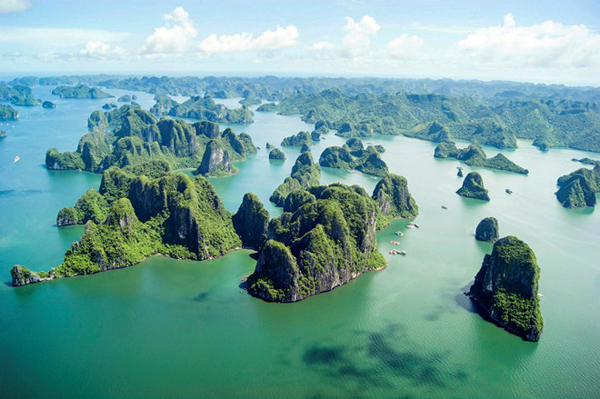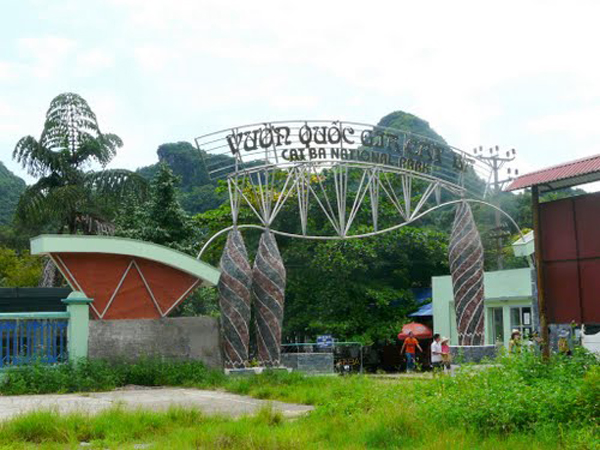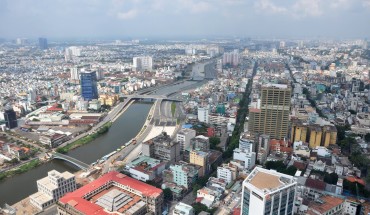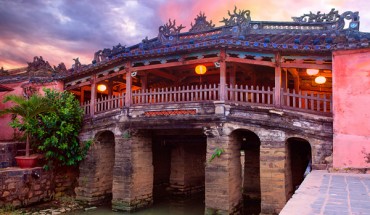Both Vietnamese and overseas visitors are flocking to this region in increasing numbers as facilities improve – for the seafood, swimming and sunbathing – but above all to marvel at the magnificence of Halong Bay.
In Vietnamese, ha long means ‘descending dragon’, and legend has it that Halong Bay was formed by a gigantic dragon which plunged into the Gulf of Tonkin, creating thousands of limestone outcrops by the lashing of its tail. Geologists tend to dismiss this theory, arguing that the myriad islands that dot Halong Bay and extend all the way north to the Chinese frontier are the product of selective erosion of the seabed over millennia.
Either way, the result is outstandingly beautiful. More than 2,000 craggy, pinnacle-shaped inlets are scattered across 1,500 sq km (580 sq miles) of the bay, making an excursion by boat a memorable journey – not least for the eerie experience of sailing through silent, mysterious caves. Boats can be chartered locally in Bai Chay, around the harbor in Hong Gai or Tuan Chau Island; alternatively almost any travel agent in Halong City or Hanoi will be only too pleased to arrange a tour. The most spectacular islands and dramatic caves lie in the western part of the bay – your boat- man will be acquainted with all the best sights. A full day tour of the islands is advised, though shorter trips are possible – lunch or dinner on board, generally fresh seafood, is highly recommended, but should be arranged beforehand.
Cat Ba National Park
Cat Ba National ParkAn alternative way to see Halong Bay is via Cat Ba Island which also permits a visit to Cat Ba National Park. The most direct way to get to the island is by air-conditioned express boat from Haiphong (9am daily except Tuesday), although there are also two slow ferries each day. The route to Cat Ba cuts across the estuary of the Bach Dang River where the Vietnamese routed invading Chinese forces in 938AD and destroyed an attacking Mongol fleet in 1288.
Boats dock at Cat Ba Town, the only settlement of any size, where it is possible to stay overnight and eat in some comfort. From Cat Ba Town, it is a simple matter to visit Cat Ba National Par and explore its rugged, pristine scenery. The park which is chiefly known for its population of rare golden-headed langurs, is also home to an astonishing range of flora – more than 750 species of plants have been identified to date. Kayaking around the coastal waters of Cat Ba Island is another pleasant way of exploring this area.
Boats may readily be chartered to explore Halong Bay to the north, or the smaller but picturesque Lan Ha Bay to the northeast of Cat Ba Town. It’s also possible to reach Halong City by boat from Cat Ba, making a crossing of Halong Bay en route.
Beyond Halong Bay, the remarkable Limestone outcrops continue to stud the sea northwards to the Chinese frontier by way of Bai Tu Long Bay. A charter to this scenic area, as yet all but unvisited by tourists, can be arranged from Halong City and takes about 5 hours each way.
Extra reading about Halong Bay tours.






